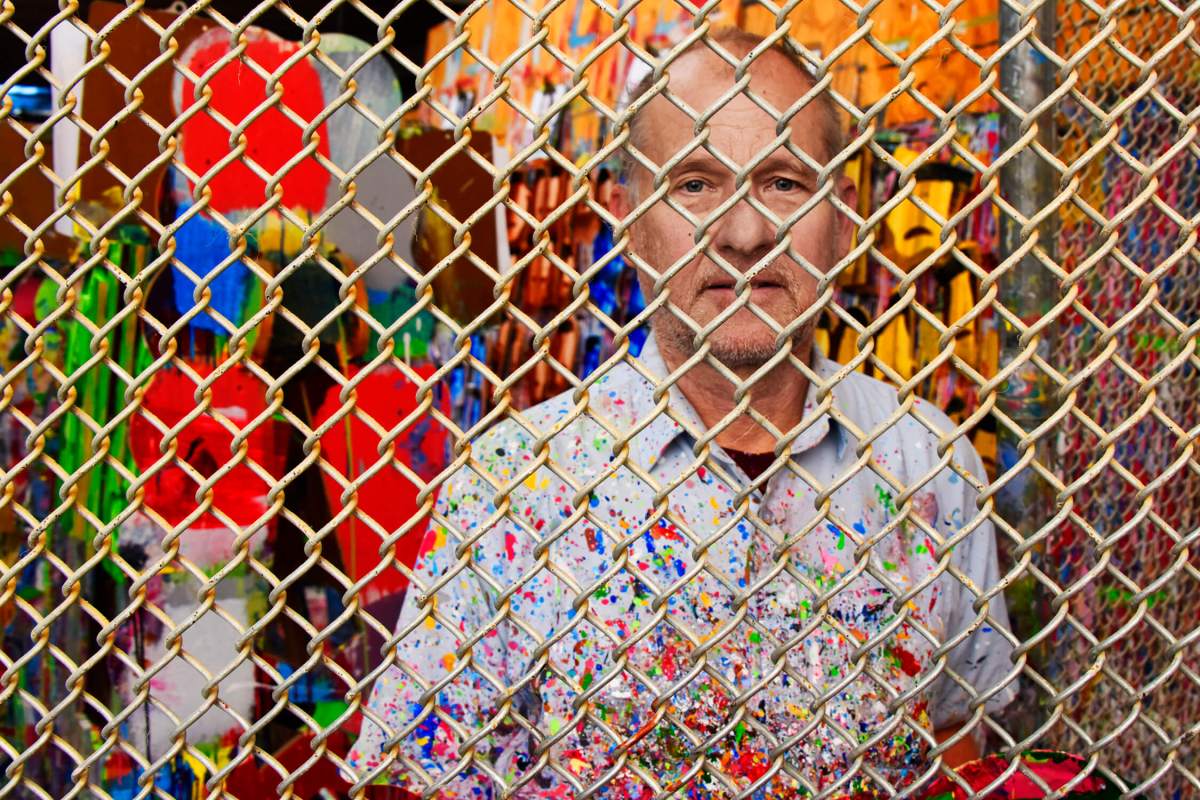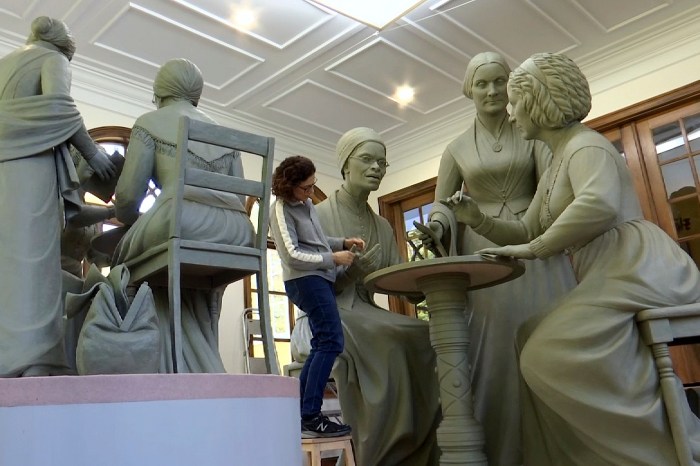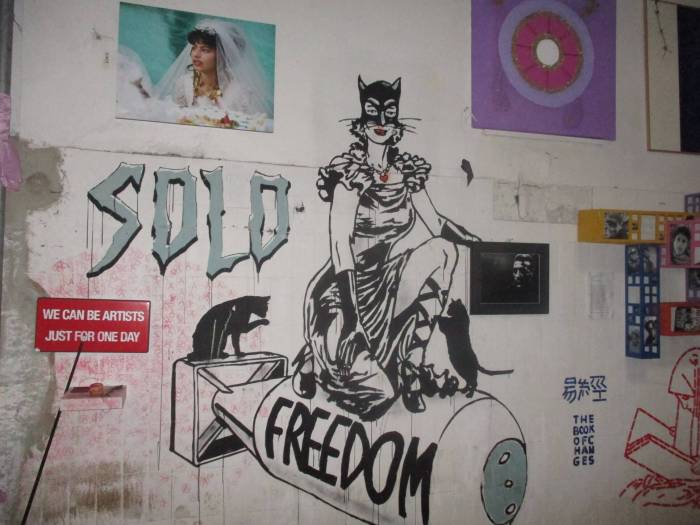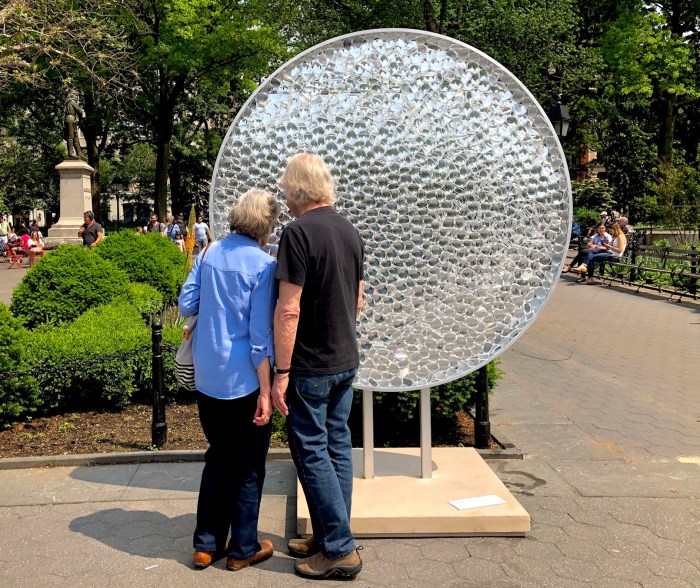Steve Keene makes art — a lot of it. It makes him happy that people hang it on their walls and enjoy it.
If it were up to him, though, this article would probably stop right here, as explaining his process and the impetus behind it are not at the top of his to-do list.
“I don’t want to be analyzed,” he states. “I just want people to like what I do.”
Keene, whose past gigs include being a dishwasher and a DJ, has produced over 300,000 paintings to date. That estimate is based on the amount of plywood — which he uses in lieu of canvases — that he’s bought over the years, as there’s no record of exactly what he’s accomplished.
He’s created most of them in a cage that he built in his studio in Brooklyn, although he’s been known to set up in an art gallery and paint away, creating up to 100 paintings a day assembly line style. Whether he’s made those works in public or in private, he sees the process as an experience that he is sharing with his patrons.
“I do like people to know that what I make is a souvenir of the way I work — they get part of the performance of that day,” he explains. “And it makes me happy when people say things like, ‘Thank you, I’ve never seen anything like this before.”
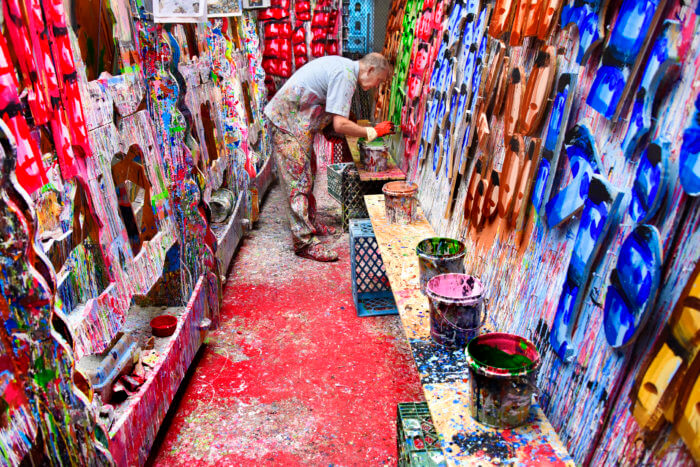
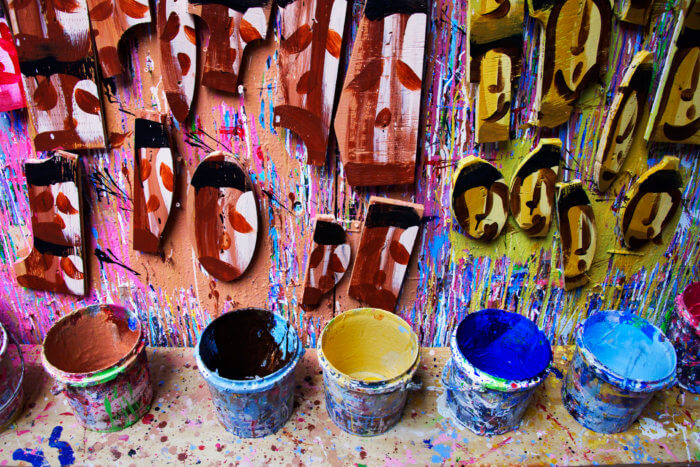
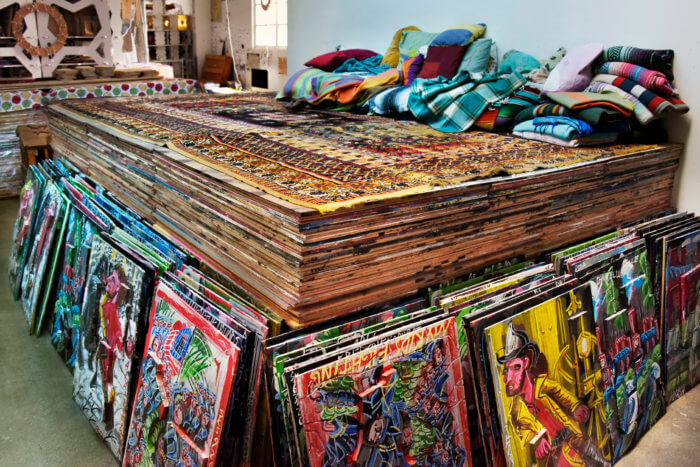
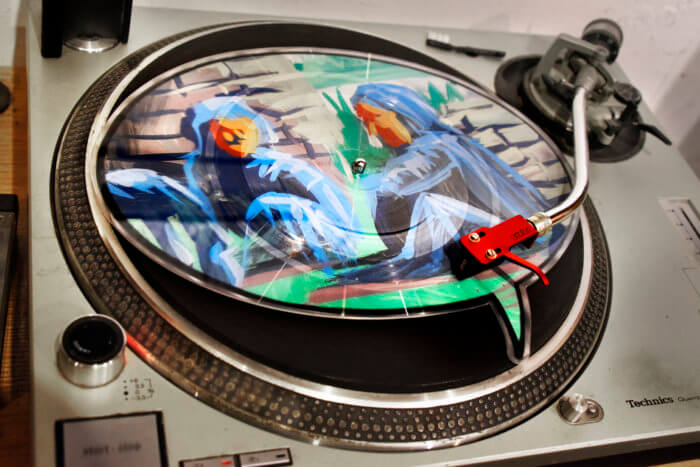
One of his more popular themes are classic album covers, but he insists that “the subject matter is not important.” Nevertheless, he is widely admired by music fans, many of whom bought his work at the Thread Waxing Space, an alternative music venue that thrived in Lower Manhattan in the 1990s.
“The album covers are about 1/3 of my work,” he says. “I kind of think of them as relics of a time when you were a kid and you’d spend an hour trying to decide what album to buy.”
For the record (no pun intended), the first album he bought was “Snoopy vs. The Red Baron” by the Royal Guardsmen, and his first single was The Beatles’ “Lady Madonna.”
His first big exposure commercially came with a commission to create an album cover for the band Pavement in 1995. Since then there have been other music projects, including a Klezmatics album that won a Grammy and gallery shows that have been hugely successful, with 1,500 or so pieces (or as little as 2 for $5) flying out the door at the Frieze fair — and somewhere between 5,000 to 7,000 sold at a show at the Marlborough Gallery, where he spent a month painting in person.
It was at Keene’s show in LA in 2016 that East Village photojournalist/producer/activist Dan Efram realized that Keene was not keeping track of his work.
Efram, who’s been a fan of the artist for decades (with 100 or so Keene pieces to prove it), successfully pitched the idea for a Keene show to Shepard Fairey’s Subliminal Projects gallery and ended up curating the show with Fairey as well as photographing the 800 pieces that made up the show for a possible catalog.
“He sold 550 pieces on the first night,” Efram informs us. “And I realized that Steve was not archiving his work.”
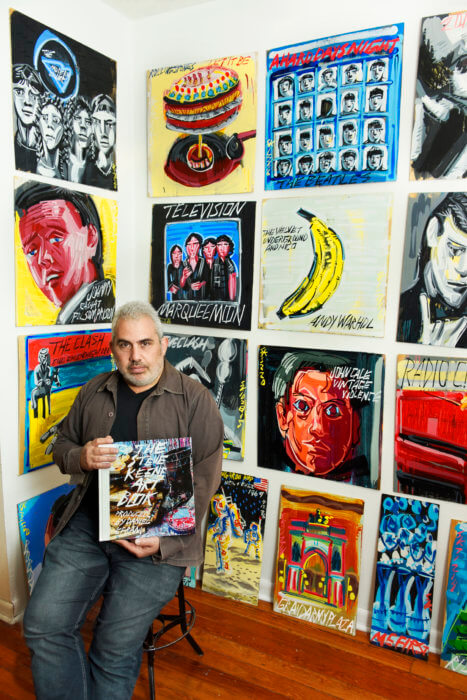
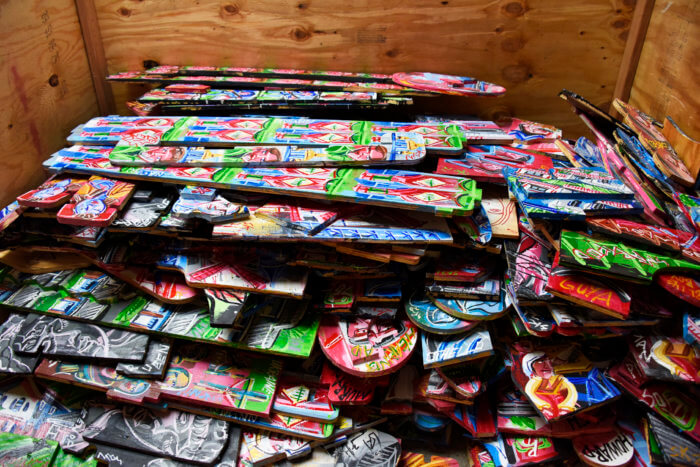

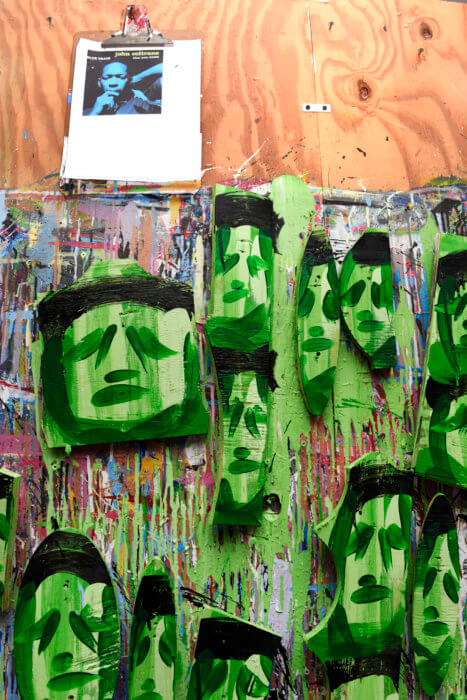
Initially the idea was to reproduce the works from that show in a book, but Efram got ambitious — maybe a little crazy — and changed the project to an overview of Keene’s career. A successful Kickstarter campaign made it possible, but he couldn’t have done it without the help of the Keene collectors who sent him their favorite pieces so that he could photograph them for the project.
The result is a gorgeous 12″ x 12″ (that would be the size of an LP cover), 265-page hardcover ode to Keene’s prodigious output.
“The book is a love letter to his work,” says Efram.
Keene has slightly mixed feelings about the book, but not about the quality.
“It’s super beautiful,” he admits. “If I don’t try to overthink it, it’s really great. But the idea of putting everything in a book is that it’s frozen in time. For me that’s complicated. But it’s great, and very flattering.”
The Public Access gallery will be hosting a four day show which will also serve as a book launch. Gallery owner Leo Fitzpatrick didn’t exactly curate it, though.
“Steve came up with a plan and I facilitated it,” he explains. “I’m letting Steve do what he wants.”
That will probably involve hanging 500 paintings at about $5 each.
“Steve is best described as genuine,” he opines. “He has a signature style that speaks to me of growing up in New York.”
As for Keene, it might be tempting to look at him as an “outsider artist”, but he studied painting at Yale and spends many of his weekends going to museums. He’s happy to talk about his favorite artists — including Cezanne and Rauschenberg — more than his own work. He does mention that his method boils down to the fact that “I’ve dumbed it down to a craft – I don’t have to think about it. I’m in the moment.”
As for the massive amount of work that has gone out the door and the piles of art that still reside in his home, Keene muses, “It’s all one long day to me — it’s like I’ve been working on a painting that I started 30 years ago.”
“The Steve Keene Art Book” will be available at the opening at the Public Access gallery, 105 Henry St., Lower East Side, on April 7 from 5-8 p.m. and directly from https://bit.ly/3IsEfCu.



